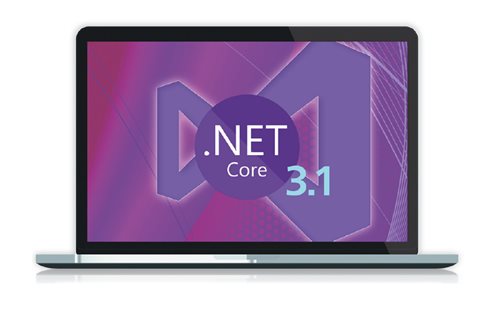The latest version of List & Label always supports the latest Microsoft .NET technologies. Find further details on this at .NET Reporting in Visual Studio With List & Label.

For many organizations, migrating from .NET Framework to .NET Core may be a Herculean task. Often applications with millions of lines of code have to be migrated. Therefore, without any further ado: There is no hard reason for a migration – neither technically nor legally. Scott Hunter, Director of Program Management for .NET at Microsoft, recently stated: “.NET Framework 4.8 will be the last major version of .NET Framework. If you have existing .NET Framework applications that you are maintaining, there is no need to move these applications to .NET Core. We will continue to both service and support .NET Framework, which includes bug-, reliability- and security fixes.”
However, those who continue to work with the classic .NET Framework in the future will find themselves at a technical impasse. Because Microsoft will only continue to develop the .NET Core technology. Libraries such as ASP.NET Core and Entity Framework Core will no longer be rolled out for the classic .NET Framework. Also some language features in C# 8.0 like ranges, indices and asynchronous streams will not become available in .NET Framework 4.8. In addition, the move to .NET Core 3.1 offers a number of advantages:
- .NET Core is platform independent, as long as the UI frameworks WinForms and WPF are not used
- Significantly higher performance thanks to newly introduced language features, memory management classes and a modular architecture
- A simplified project format and command line tools facilitate integration into automated processes
- New software architectures and concepts like Razor Class Libraries and many more
Of course, there are also some disadvantages that have to be considered when migrating to .NET Core. Not all APIs from the classic .NET Framework are included in .NET Core. This means that not all third-party libraries run on .NET Core. Another aspect is the shortened support period for Long Term Support releases to three years – previously it was 10 years. Unfortunately, the quality of the documentation does not yet reach the level of the .NET Framework’s documentation and the NuGet package system still struggles with technical problems despite many improvements.
The advantages and disadvantages of .NET Core make the migration a question of weighing up. Useful tools like the .NET Portability Analyzer help developers to make a decision. The conclusion can be drawn, however: For existing applications, a migration to .NET Core should be well thought out, because important APIs might be missing. But, if you are starting to develop a new application today, you should do so with .NET Core. Since version 25, List & Label has given developers the opportunity to work with the new .NET Core frameworks, although the applications are still only executable on the Windows platform. Thus, already at the release of version 25, the .NET assemblies were .NET Core 3.0 compatible. And with the first Service Pack 25.001 (02/2020) List & Label was of course already ready for .NET Core 3.1. But of course we always support the latest versions of Microsoft .NET technologies with the currently available List & Label version – details can be found under .NET Reporting in Visual Studio With List & Label.
Try the current List & Label version for 30 days free of charge.
Daniel has undergone training as a software developer at combit, where he currently leads the Customer Support department as a manager. His responsibilities extend beyond software development to include technical collaborations with business partners. He conducts workshops for developers and serves as a technical advisor to the sales and service team. Outside of work, Daniel is an avid cyclist, frequently seen navigating the trails around Lake Constance and the neighboring Alps on his mountain or road bike. Additionally, he dedicates time to practicing Chinese martial arts, including Wushu Kungfu and Taichi.





